Introduction To Spiders And Their Importance
Spiders are fascinating creatures that are both feared and admired by humans. They belong to the arachnid family, which also includes scorpions, ticks, and mites. Spiders are found in every continent on earth, except for Antarctica. These eight-legged creatures are known for their unique ability to spin webs, their venomous bites, and their important role in our ecosystem. In this blog post, we will discuss the importance of spiders and their ecological significance.
Spiders are considered to be one of the most important predators in nature. They help to control the population of insects, which can be harmful to our environment. Spiders feed on insects such as flies, mosquitoes, and even other spiders. Without spiders, the insect population would increase dramatically, which could cause a devastating effect on our food chain.
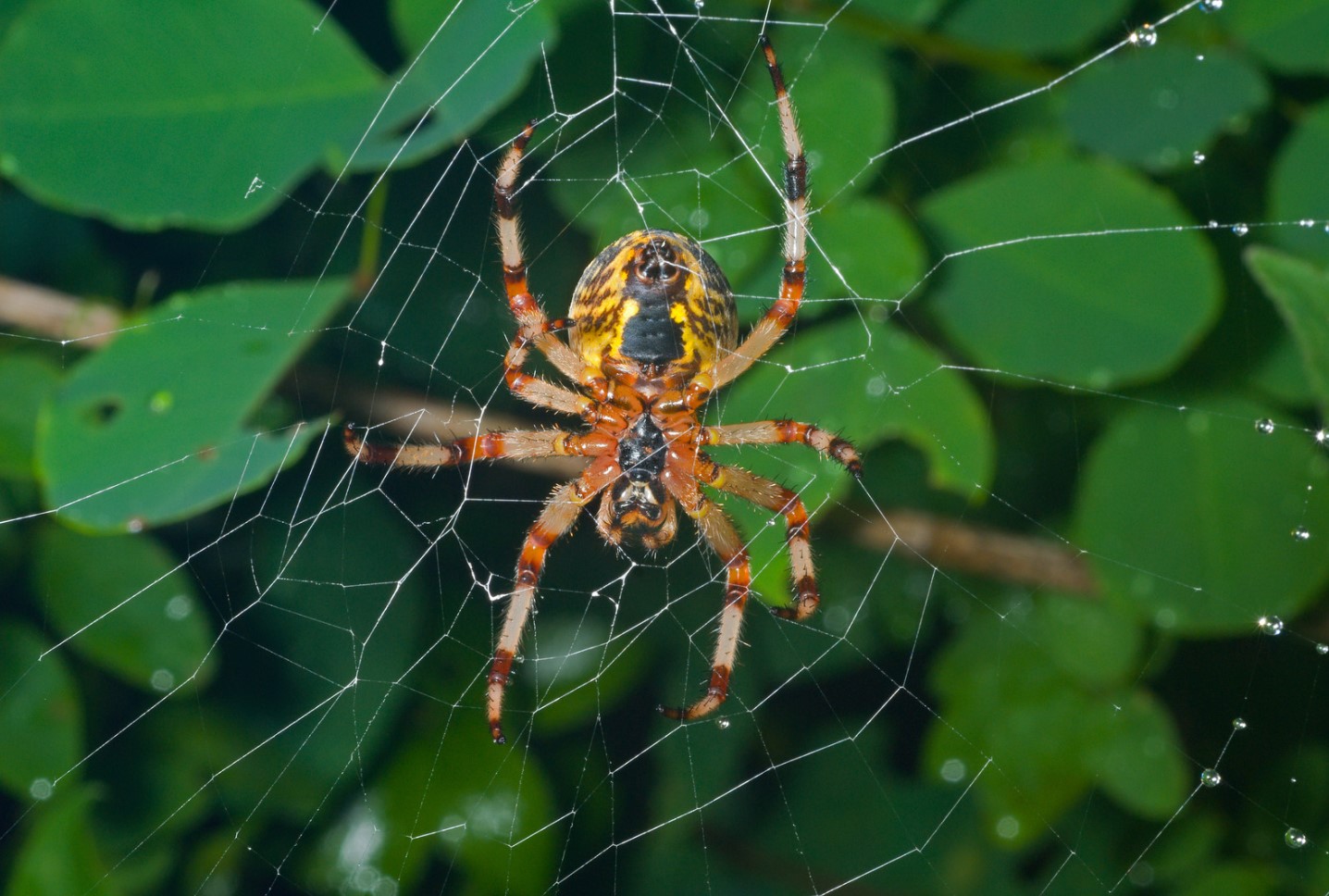
Spiders also play an essential role in pollination. Some spiders, such as the crab spider, are known to visit flowers in search of prey. While doing so, they transfer pollen from one flower to another, which contributes to the reproduction of plant species. This means that without spiders, certain types of plants would not be able to reproduce, which would impact our ecosystem’s diversity.
- Spiders are a source of food for other animals. Many animals, including birds and other insects, feed on spiders. This means that spiders are an important part of the food chain, and their removal can have unintended consequences.
- It is also important to note that spiders are not just predators; they are also prey. Some animals, such as wasps, feed on spiders as their primary food source. In this way, spiders are a crucial part of the ecosystem, and their removal could have a ripple effect on the food chain.
In conclusion, spiders are an essential part of our ecosystem. They help to control the population of insects, pollinate plants, and serve as a food source for other animals. While spiders may seem frightening to some, it is important to remember their importance and to appreciate their role in our environment.
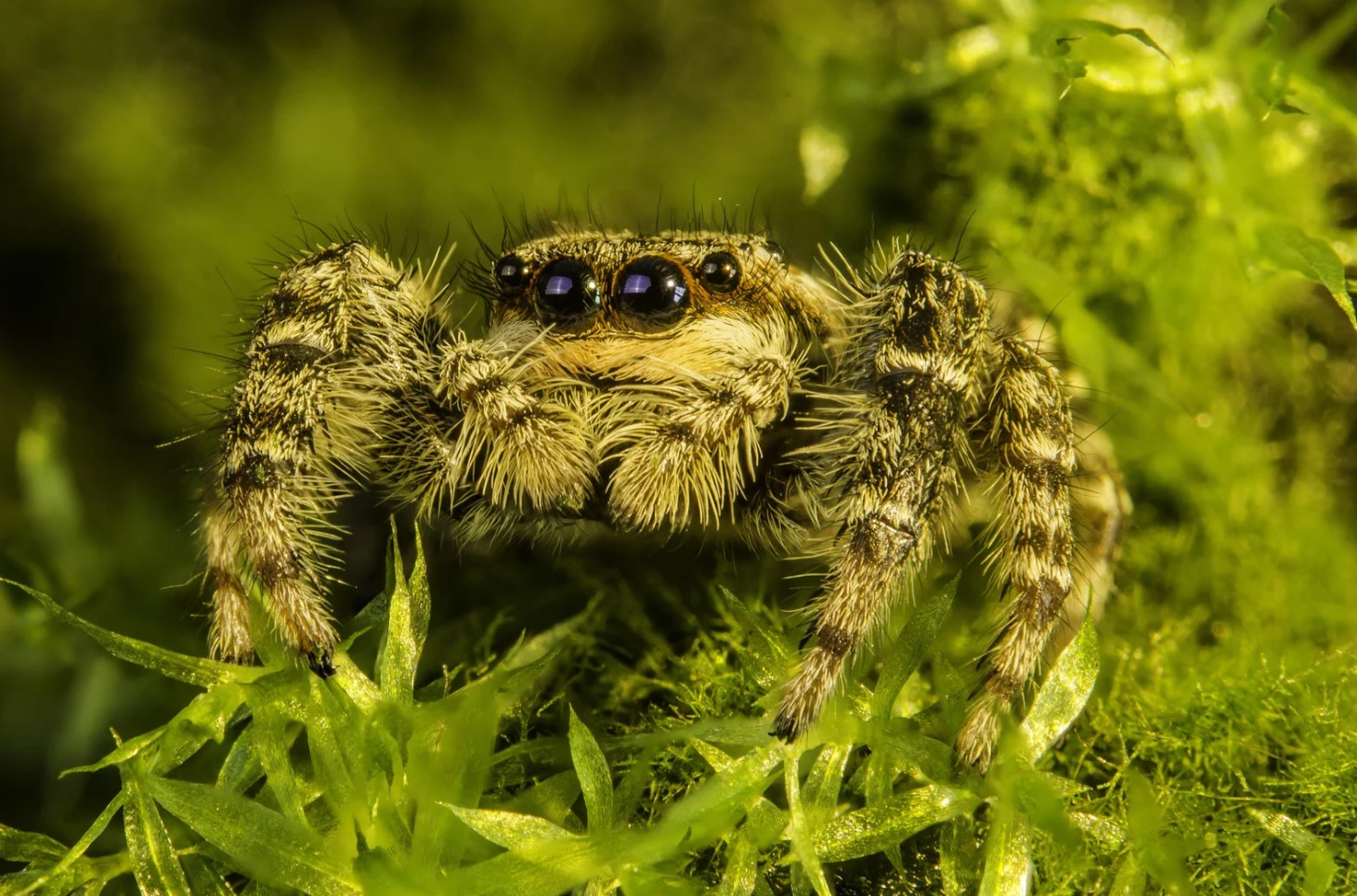
Understanding The Anatomy Of Spiders
Spiders belong to a class of eight-legged invertebrates called arachnids. Understanding the anatomy of spiders helps in identifying them and understanding their behavior. The body of a spider has two main parts, the cephalothorax and the abdomen. The cephalothorax contains the head, eyes, mouthparts, and legs. The abdomen contains the reproductive organs and digestive system.
- Head: The spider’s head has two main parts, the eyes and the mouthparts. Spiders have two types of eyes, simple and compound, which help them see prey and predators. Their mouthparts consist of chelicerae and pedipalps, which are used for biting and manipulating food.
- Legs: Spiders have eight legs that are attached to the cephalothorax. The legs are covered in sensitive hairs that help them detect vibrations and tastes. The legs are also used for walking, running, and catching prey.
- Pedipalps: Attached to the cephalothorax, pedipalps are two jointed appendages that resemble tiny legs. They are used for holding prey, sensing vibrations, and for mating.
- Abdomen: The abdomen of spiders contains the reproductive organs, digestive system, and other organ systems. Some of the organs that are found in the abdomen include the heart and respiratory system, which help with circulation and respiration respectively.
| Type | Body Parts |
|---|---|
| Jumping Spider | Small legs, large eyes |
| Wolf Spider | Large legs, hairy body |
| Orb Weaver Spider | Large abdomen, delicate legs, spin webs |
In conclusion, understanding the anatomy of spiders is essential for identifying them and understanding their behavior. The body of a spider consists of the cephalothorax and the abdomen. The cephalothorax contains the head, eyes, mouthparts, and legs. The abdomen contains the reproductive organs and other organ systems. Pedipalps are used for holding prey, sensing vibrations, and mating. Knowing the different types of spiders around the world can help in identifying their unique body parts and behaviors.
Characteristics And Behavior Of Spiders
Spiders are fascinating creatures that come in different sizes, shapes, and colors. They belong to the arachnid family and are characterized by their eight legs, two main body parts, and spinnerets they use to produce silk. Each spider species has different behaviors and characteristics that make them unique.
One of the most interesting characteristics of spiders is their ability to spin webs. These silken structures are used for a variety of activities, including hunting, protection, and as a means of transportation. Spiders produce different types of silk that vary in strength, elasticity, and stickiness, allowing them to create different types of webs depending on their needs.
- Another notable spider behavior is their hunting technique. Some spider species prefer to actively hunt by chasing their prey, while others rely on their webs to trap insects.
- Most spiders are solitary creatures, but some species live in groups, sharing their webs and cooperating in hunting and other activities.
- Spiders also have different means of defense mechanisms. Some species rely on their camouflage abilities to blend in with their environment, while others have distinctive warning colors.
| Spider Behavior | Characteristics |
|---|---|
| Web spinning | Used for hunting, protection, transportation |
| Hunting techniques | Active hunting, web trapping |
| Social behavior | Solitary or group living |
| Defense mechanisms | Camouflage, warning colors |
Spiders are also interesting because of their mating and reproduction behaviors. Some male spiders may be required to engage in a courtship dance or present a gift to the female to win her favor. In some species, the female eats the male after mating, while in others, the male may play a role in caring for the offspring.
In conclusion, spiders are fascinating creatures with unique behaviors and characteristics. From web spinning to hunting techniques, social behavior, defense mechanisms, and mating habits, each spider species has something unique to offer, making them worthy of further study and admiration.
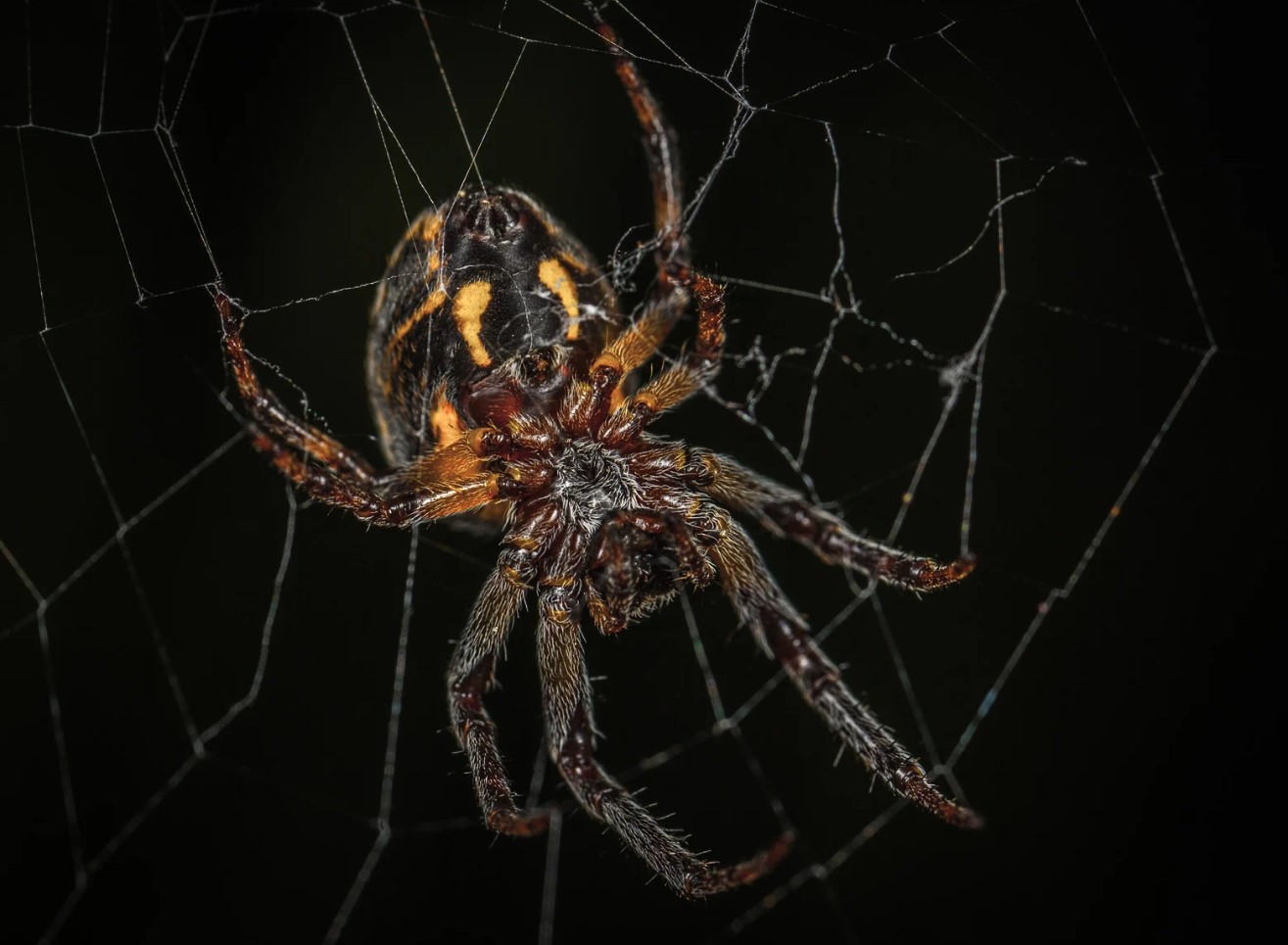
Different Types Of Spiders Around The World
Spiders belong to the arachnid family along with scorpions and ticks. There are over 47,000 species of spiders identified so far in the world, and they are found almost everywhere – from deserts, to forests, to your own backyard. Each species of spider is unique in its appearance and behavior, making them an interesting subject to study.
- Tarantulas: These big and hairy spiders can grow up to 30cm in length and can be found in tropical regions worldwide. They are mostly known for their venomous bite, but not all species of tarantulas are harmful to humans.
- Jumping Spiders: These spiders are known for their agility and can jump up to 50 times their body length. They are found all around the world and have unique color patterns that make them popular as pets.
- Wolf Spiders: These spiders have a unique hunting behavior where they chase their prey down instead of building webs to catch them. They are found in a variety of environments and are known for their distinctive eye arrangement.
Other types of spiders include orb-weavers, funnel web spiders, and fishing spiders. Orb-weavers are famous for their beautiful circular webs, while funnel web spiders are considered one of the most dangerous spiders due to their potent venom. Fishing spiders, on the other hand, are known for their ability to walk on water.
| Spider Type | Environment | Fun Fact |
|---|---|---|
| Tarantulas | Tropical regions worldwide | Some species of tarantulas can live up to 30 years. |
| Jumping Spiders | Found all around the world | Jumping spiders have four pairs of eyes, with one pair being larger than the others. |
| Wolf Spiders | Found in a variety of environments | Female wolf spiders carry their eggs with them in a silk sac attached to their abdomen. |
It is fascinating to examine the different types of spiders and their adaptations to their environments. Despite their reputation as creepy crawly pests, spiders play an important role in our ecosystem by controlling insect populations. Understanding and appreciating them can help us better appreciate and protect the diverse wildlife on our planet.
Venomous Spiders And Their Dangers
Venomous spiders can be found all over the world, from the Brazilian wandering spider to the black widow. These spiders can be incredibly dangerous to humans and can cause a variety of symptoms, from mild irritation to death. However, it is important to note that not all venomous spiders are aggressive and will only attack if provoked.
The most well-known venomous spider is the black widow. These spiders can be found in North America and are easily recognizable by their black coloration with a red hourglass shape on their abdomen. The venom of a black widow can be deadly to humans, particularly young children, the elderly, and those with weakened immune systems. Symptoms of a black widow bite include muscle cramps, abdominal pain, and muscle spasms.
- Black widow spiders are common in North America
- Their venom can be deadly to certain populations
- Symptoms of a black widow bite include muscle cramps and abdominal pain
Another venomous spider is the brown recluse, which can be found in the United States. These spiders are fairly small and have a distinctive violin-shaped marking on their back. A bite from a brown recluse can cause tissue damage and necrosis, which may require medical attention. Symptoms of a brown recluse bite include fever, chills, and joint pain.
- Brown recluse spiders are found in the United States
- Their bite can cause tissue damage and necrosis
- Symptoms of a brown recluse bite include fever and joint pain
It is important to be aware of the dangers posed by venomous spiders and to take precautions when entering areas where they may be present. If you suspect you have been bitten by a venomous spider, seek medical attention immediately.
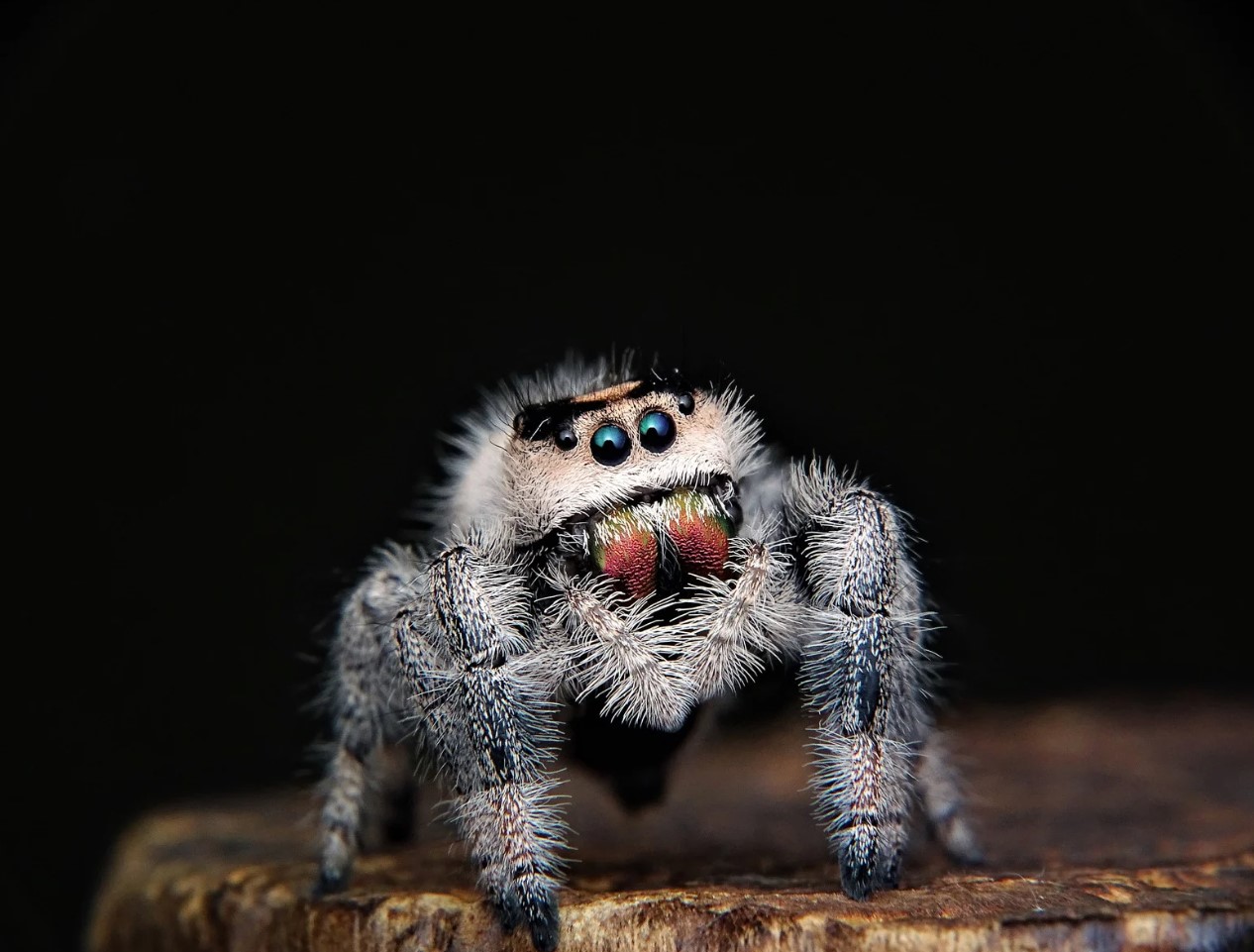
Non-venomous Spiders And Their Uses
Spiders are often portrayed as scary creatures that we should avoid at all costs. However, not all spiders are venomous and actually, some of them can be pretty useful. In fact, some non-venomous spiders can be very beneficial to us and our surroundings. In this blog post, we’ll take a closer look at non-venomous spiders and their uses.
One of the most common non-venomous spiders is the house spider. These spiders are often found in our homes and can actually help us keep other insects in check. House spiders feast on a variety of insects that are also commonly found in houses, such as mosquitoes, flies and moths. By keeping the population of these insects in control, house spiders can actually help us keep our homes bug-free.
- Spiders like the wolf spider and the ground spider are also non-venomous and play a very important role in controlling crop-damaging pests.
- These spiders are natural predators of aphids and other insects that can harm crops. By eating these pests, they help farmers reduce their dependence on harmful pesticides. This can lead to healthier crops and a healthier ecosystem overall.
In addition to their pest control benefits, some non-venomous spiders are also used in medicine. The venom of certain spiders has been found to have medicinal properties that can be used to treat various conditions. For example, the venom of the funnel web spider has been used in a treatment for stroke victims.
| Spider species | Uses |
|---|---|
| Huntsman spider | Used in traditional medicine in Laos to help reduce inflammation and relieve pain |
| Brown recluse spider | Used in the production of anti-venom for spider bites |
| Tarantula | Used in traditional medicine to treat pain and inflammation |
It’s clear that non-venomous spiders have a number of uses that are often overlooked. From controlling pests to potentially life-saving medical treatments, these spiders play an important role in our ecosystem and our lives.
Famous Spiders İn History And Mythology
Spiders have been fascinating creatures to humans for centuries, and have played prominent roles in various mythologies and folklore around the world. They are often depicted as symbols of creativity, wisdom, and patience. Let’s take a look at some of the famous spiders in history and mythology.
- Anansi: Anansi is a famous spider in West African mythology, often depicted as a trickster. He is known for his ability to outsmart larger animals by using his wit and intelligence. He is also associated with storytelling and wisdom, and is often depicted in children’s books and cartoons.
- Arachne: In Greek mythology, Arachne was a gifted weaver who challenged the goddess Athena to a weaving contest. When Arachne’s work was judged superior, Athena turned her into a spider as punishment, and thus the word “arachnid” was born.
- Charlotte: Charlotte is the beloved spider from E.B. White’s classic children’s book, “Charlotte’s Web.” She is a wise and gentle creature who befriends a pig named Wilbur and helps him avoid being slaughtered by writing words in her web, such as “Some Pig” and “Terrific.”
These are only a few examples of the many famous spiders in history and mythology. Despite their small size, spiders have captured our imaginations and become an intricate part of our culture.
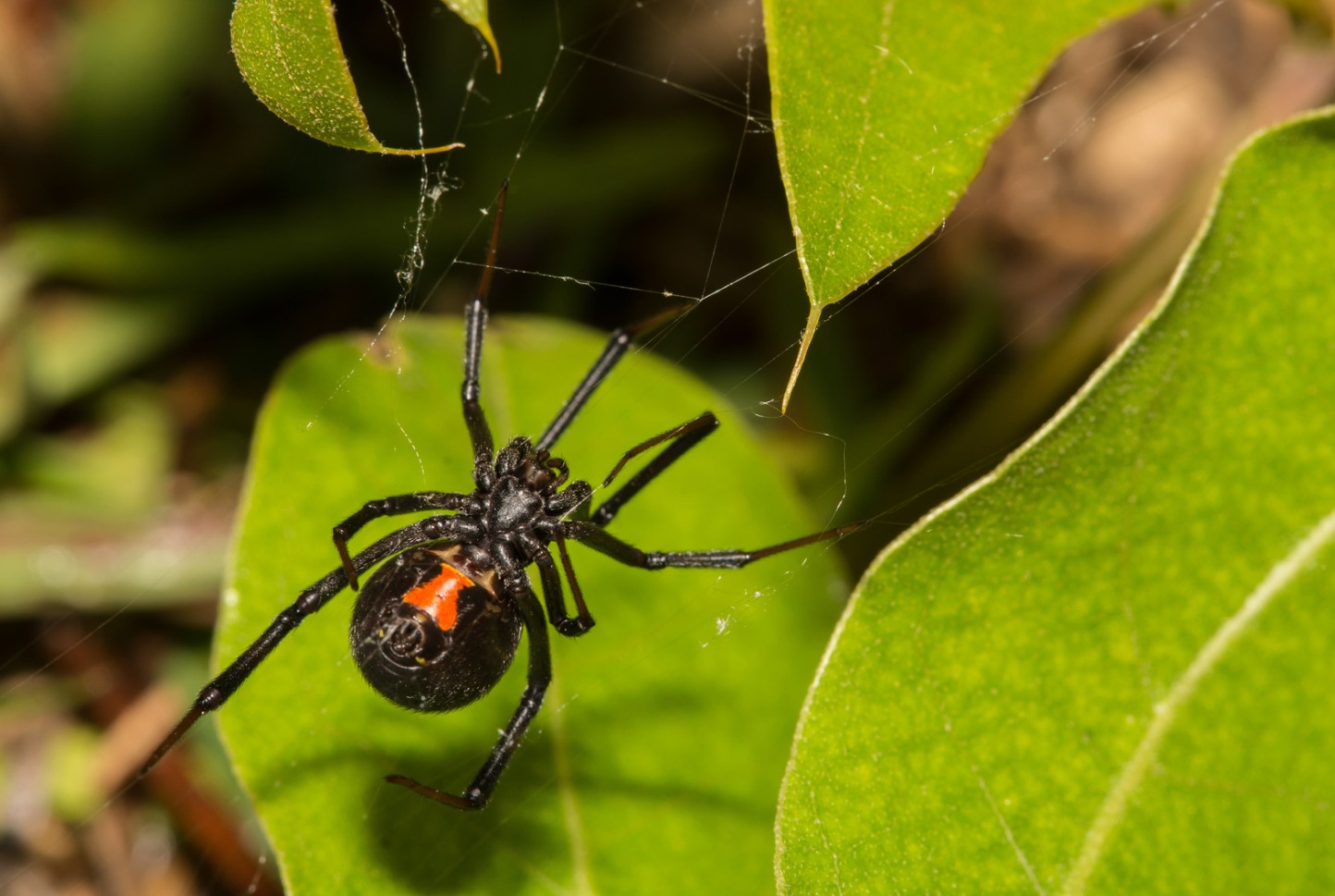
Spiders İn Literature And Art
Spiders have always fascinated humans, and it’s no surprise that they have made their way into literature and art in various forms. Whether it’s a scary spider in a horror story or a beautiful spider-inspired artwork, they have been depicted in many different ways.
One of the most famous spiders in literature is Charlotte from E.B. White’s “Charlotte’s Web.” She was a kind and wise spider who helped save a pig from being slaughtered. The book also explores the theme of friendship and the interconnectedness of nature.
- Did you know? Charlotte’s Web is one of the best-selling children’s books of all time and has been translated into 23 languages.
In contrast to Charlotte’s gentle nature, spiders are often used as symbols of fear and death in horror stories. The classic example is “Dracula” by Bram Stoker, where the Count’s castle is filled with cobwebs and hundreds of spiders. The sight of spiders crawling all over the walls and ceilings creates a feeling of horror and disgust in the reader.
- Fun fact: In real life, spiders avoid human contact and are not out to get us.
Spiders have also been depicted in art throughout history. One famous example is the “Black Widow” sculpture by Louise Bourgeois. It’s a steel and marble sculpture of a spider with a sac of marble eggs attached to the underside of its belly. Bourgeois created the sculpture as a tribute to her mother who was a weaver and died when Bourgeois was 21 years old.
| The sculpture: |  |
Another example of spider-inspired art is the “Maman” sculpture by the same artist. The sculpture is a giant spider made of bronze, stainless steel, and marble. The inspiration for the sculpture came from Bourgeois’ childhood, where her mother used to repair tapestries that had been damaged by spiders. The sculpture is over 30 feet tall and has been displayed in various locations around the world.
- Fact: Maman means ‘Mom’ in French and it’s an ode to Bourgeois’ mother who was a weaver.
Spiders have always had a place in art and literature and will continue to fascinate us. They are creatures of beauty and horror, and their intricate webs and unique body structures have inspired artists and writers alike.
Spider Reproduction And Life Cycle
Spiders, like any other living beings, follow a particular life cycle. Their journey from a tiny egg to a spider is fascinating to observe. Spider reproduction and life cycle is a complex process that takes place in several steps.
Step 1: Mating and Fertilization
Spiders reproduce sexually. Once the male spider finds a female spider, he must first convince her to mate with him. Depending on the species, this can be a risky and even deadly process as the female may see the male as prey. If the male is successful, he deposits his sperm inside the female’s genital opening through a specialized appendage. The female then lays her eggs, which are fertilized by the sperm, and encases them in a sac or cocoon.
Step 2: Development of the Embryo
Inside the silk sac, the eggs develop into spider embryos. In some species, the young spiders hatch from the eggs at this stage, but in others, they stay inside the egg sac until they go through their first molt as spiderlings. The spiderlings are tiny versions of adults and will molt several times to grow into adulthood.
Step 3: Spiderling Stage
Spiderlings are like miniature adults, but they don’t have fully developed sexual organs yet. They spend most of their early days feeding and growing. Depending on the species, they may disperse shortly after hatching or stay in the web cluster with their mother. As spiderlings grow and molt, they develop more and more adult-like characteristics, including the full development of sexual organs.
Step 4: Adult Stage and Reproduction
When the spiders reach adulthood, they are capable of reproduction. The males typically mature faster and may die soon after mating, while females can live for several years. The reproductive process then starts over again. Some species reproduce seasonally, while others may reproduce throughout the year.
The entire spider reproductive and life cycle can take anywhere from a few weeks to several years, depending on the species, habitat, and other environmental factors. It is fascinating to observe and understand the complex steps involved in spider reproduction and growth from the moment they are born as tiny spiderlings to becoming adult spiders
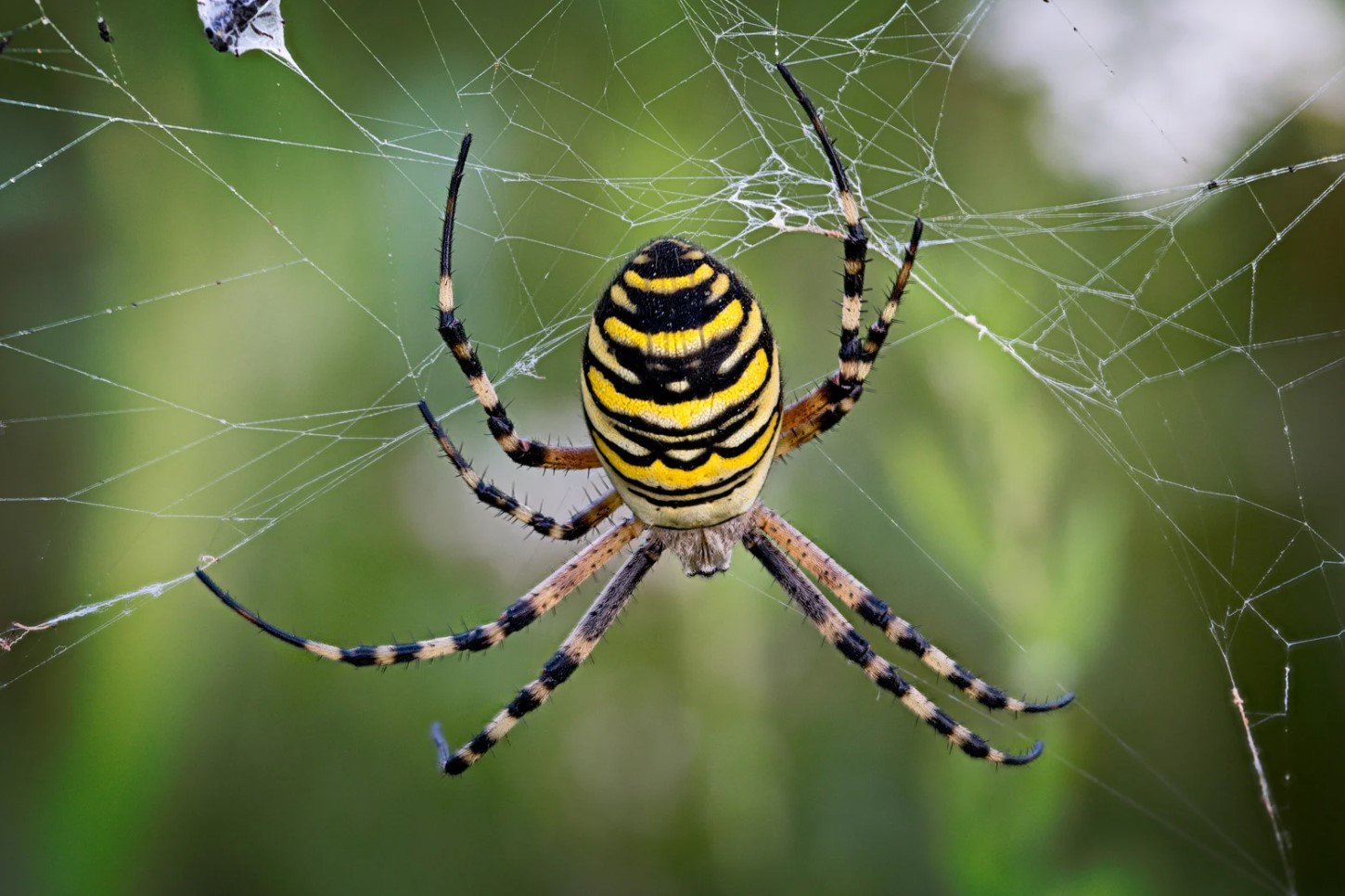
Spider Webs And Their Intricate Designs
Spiders are known for their intricate and often beautiful webs. These webs serve as both their homes and hunting grounds. Made from silk produced by glands in their abdomen, spider webs come in a variety of shapes and sizes, ranging from simple funnel webs to complex orb webs.
Orb webs are perhaps the most recognizable type of spider web. They are circular, with radiating strands of silk connected to a hub. These webs are used by spiders to catch flying insects such as flies and moths. Funnel webs, on the other hand, are shaped like a cone or funnel and are used by spiders that do not build orb webs. They are often found in grass or under rocks, and the spider hides in the narrow end of the cone, waiting to ambush prey.
- Another type of spider web is the cobweb. This is the messy, tangled web that many people associate with spiders. Cobwebs are built by many different species of spiders and are often used as a retreat or hibernation site rather than a trap for prey.
- Some spiders also build sheet webs, which are flat and often found in vegetation. The spider hides underneath the web and detects prey as it moves across the surface.
Spider webs are not just useful for hunting and living quarters, but they also have many uses in scientific research. Scientists have been studying spider silk and its unique properties, such as its strength and elasticity, in the hope of using it to develop new and innovative materials.
| Variety of Spider Webs | Description |
|---|---|
| Orb webs | Circular webs used to catch flying insects such as flies and moths |
| Funnel webs | Conical-shaped webs used by spiders to ambush prey |
| Cobwebs | Messy, tangled webs often used by spiders as a retreat or hibernation site |
| Sheet webs | Flat webs found in vegetation; the spider detects prey as it moves across the surface |
Despite their beauty and usefulness, spider webs can cause problems for humans when they are built indoors. Spiders such as house spiders may build webs in inconvenient places, leading to the need for spider control and prevention methods. However, it is important to note that most spiders are harmless and actually beneficial to have around, as they help control the populations of other insects.
Overall, spider webs are fascinating structures that serve many important functions in the lives of spiders. From hunting and homebuilding to scientific research, these intricate designs are an integral part of the natural world.
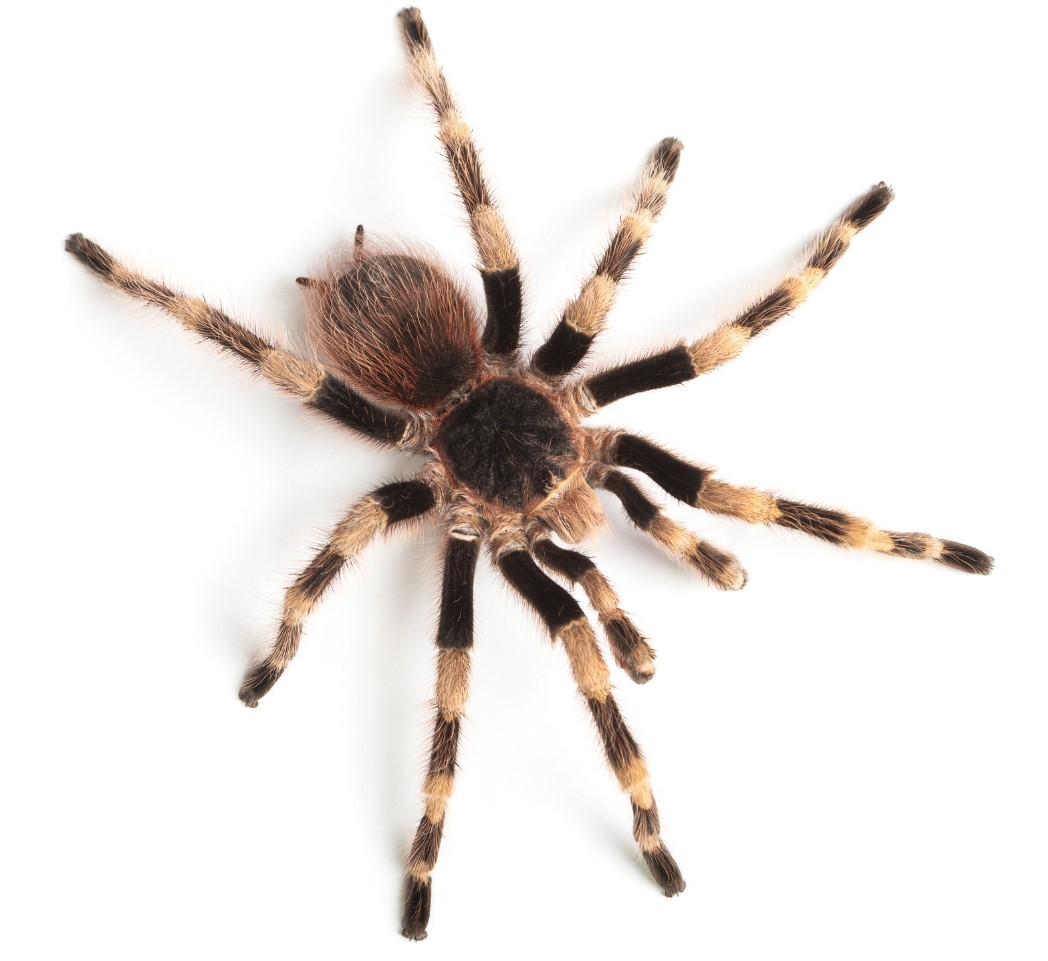
How Spiders Hunt And Feed
Spiders are fascinating creatures that have been around for millions of years. They belong to the arachnid family and have an important role in the ecosystem. One of the most interesting things about spiders is the way they hunt and feed. Unlike other animals, spiders do not have jaws or teeth. Instead, they use their venom to immobilize their prey and then suck out their liquids.
There are two main strategies that spiders use to hunt their prey. The first one is web hunting. Spiders, such as orb weavers, create intricate webs that capture insects that fly into them. Once the insect is caught, the spider senses the vibrations on the web and rushes to the site. It then uses its venom to paralyze the prey and wrap it in silk before consuming it.
- Spider Hunting: Orb weavers
- Hunting Strategies: Web hunting
The second type of hunting is active hunting. Spiders that use this method are usually faster and rely on their agility to capture their prey. They sneak up on their victims and use their venom to immobilize them. Some spiders also use their webs as a safety net to prevent their prey from escaping. The spider then consumes the victim at its leisure.
- Spider Hunting: Wolf spiders
- Hunting Strategies: Active hunting
Spiders feed on a variety of prey, including insects, other spiders, and even small vertebrates. Their diet is crucial to maintaining the balance of nature. Without them, the population of insects would grow uncontrollably, leading to an increase in crop damage and the spread of disease. Hence, spiders play an important role in pest control and are a vital part of the food chain.
| Spider Prey | Role in Pest Management |
|---|---|
| Insects | Controls pest population |
| Other spiders | Controls competition for resources |
| Small vertebrates | Controls population of prey |
In conclusion, spiders are remarkable hunters that use different strategies to catch and consume their prey. From web hunting to active hunting, spiders have adapted to their environment and have become a vital part of the ecosystem. Their role in pest control and maintaining the balance of nature cannot be underestimated. So the next time you encounter a spider, remember its importance in the world around us.
Spider Evolution And Fossil History
Spiders are fascinating creatures that have evolved over millions of years. The evolution of spiders can be traced back to the Silurian period, which was around 400 million years ago. During this period, the first land animals emerged and spiders were one of the many species that evolved from their aquatic counterparts. Scientists believe that spiders evolved from an extinct group of marine arthropods known as the eurypterids. These creatures were the largest arthropods that ever lived and were found in many different marine environments.
As spiders evolved, they adapted to their environments and developed unique characteristics that helped them survive. One of the most significant adaptations was the development of silk-producing glands. This allowed spiders to not only produce webs that helped them catch prey but also create egg sacs and shelter.
- Some spiders evolved to be able to live in some of the harshest environments on earth.
- One example of this is the polar sea spider, which can live in sub-freezing temperatures.
- Other spiders, such as the Australian funnel-web spider, have developed highly potent venom to defend themselves against predators.
Over time, spiders continued to evolve into the many different species we see today. Fossils of spiders have been found dating back to the early Devonian period and over 100 spider families have been identified. Many of these are still found today, while others have gone extinct. Despite their fearsome reputation, spiders have played an important role in ecosystems throughout history and continue to do so today.
| Period | Description |
|---|---|
| Silurian Period | The first land animals emerged and spiders evolved from the eurypterids. |
| Early Devonian Period | The earliest fossilized spiders have been found from this time period. |
| Mesozoic Era | The age of dinosaurs was also the time when many spider families evolved. |
| Cenozoic Era | The period after the extinction of dinosaurs was marked by the diversification of spiders into many different species. |
Spiders have left their mark on the world in many different ways. Their intricate webs have inspired humans for centuries and their venom has led to the development of life-saving medications. While some may fear these eight-legged creatures, their evolutionary history and importance in ecosystems cannot be denied.
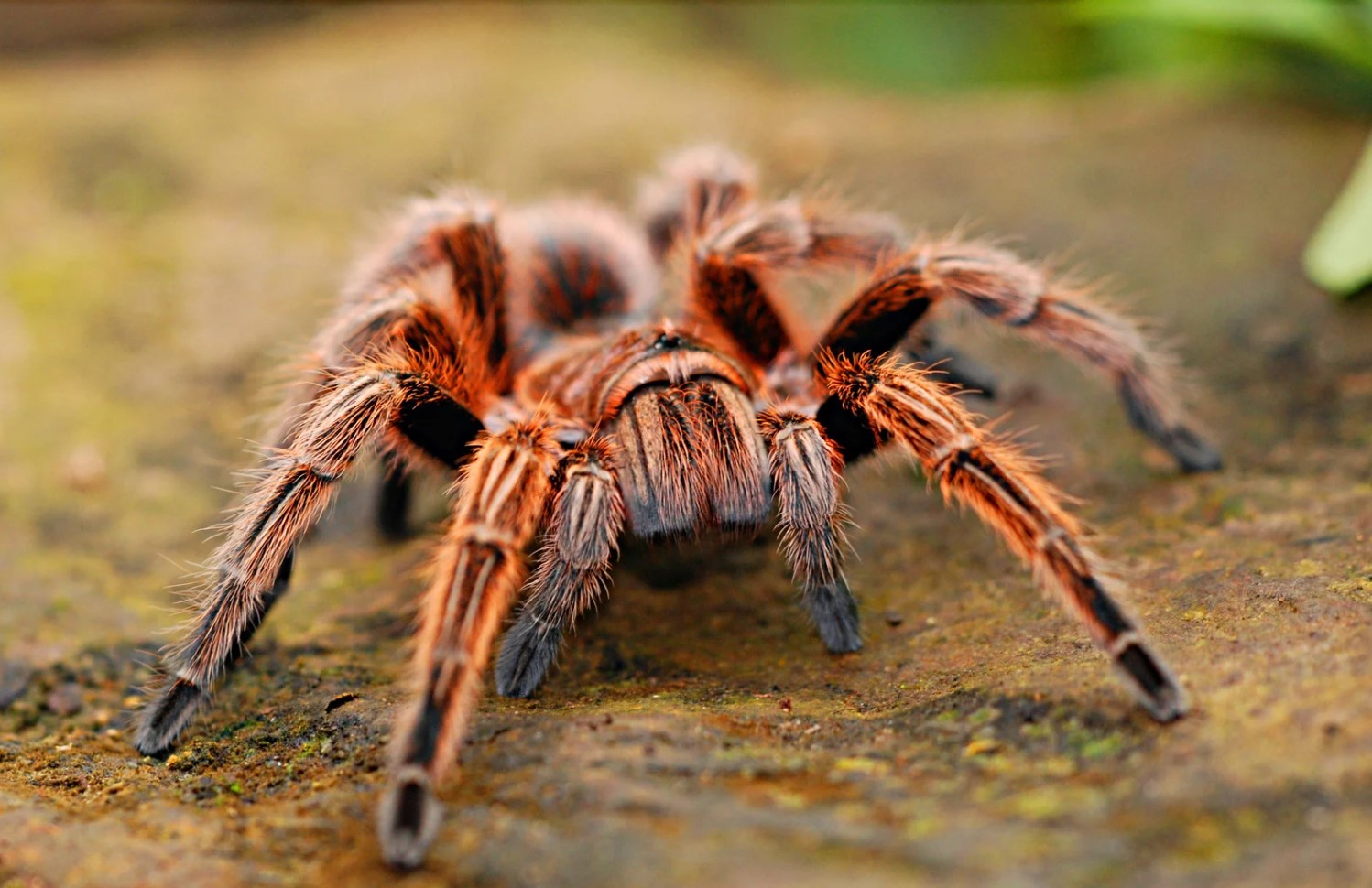
Spider Conservation And Protection
Spiders are one of the most diverse and fascinating creatures on earth. They are valued for their role in controlling insect populations, their intricate and beautiful webs, and their many unique characteristics. However, many species of spiders are at risk of extinction due to habitat loss, pollution, climate change, and other factors. This makes it important to conserve and protect these amazing creatures.
One way to protect spiders is to preserve their natural habitats. Spiders live in a variety of environments, from forests and deserts to wetlands and grasslands. As human populations continue to expand, many of these habitats are being destroyed or altered. This can have a devastating impact on spider populations, as they rely on specific conditions to survive and thrive.
- Another important strategy for spider conservation is to reduce the use of pesticides and other harmful chemicals.
- Many spiders are beneficial predators that help control agricultural pests and other insects. However, pesticides and other chemicals can kill spiders as well as their prey, leading to declines in spider populations.
Spiders can also benefit from the creation of new habitats. For example, planting native plants and grasses can provide food and shelter for spiders, while building artificial structures such as spider houses or nests can offer additional nesting and hibernation spaces. Providing adequate water sources, such as bird baths, can also be beneficial for spiders.
| Spider conservation strategies: | Examples: |
|---|---|
| Habitat preservation | Protecting forests and other ecosystems |
| Reducing chemical use | Using natural pest control methods |
| Creating new habitats | Planting native vegetation and providing water sources |
Conserving and protecting spiders is important not just for these fascinating creatures, but also for the many benefits they provide to ecosystems and humans alike. By taking steps to preserve their habitats, reduce harmful chemicals, and create new habitats, we can help ensure that spiders continue to thrive and play an important role in the world around us.
Spider Control And Prevention Methods
If you have ever had a spider infestation in your home, you know how creepy and unpleasant it can be. These eight-legged arachnids can be frightening and sometimes dangerous, especially if they are venomous. But don’t worry, here are some spider control and prevention methods that can help you get rid of them and avoid future infestations.
Cleanliness is key. Spiders love dirty and cluttered spaces, so keeping your home clean and organized can go a long way in preventing them from settling in. Make sure to vacuum and sweep regularly, especially in areas that are dark and secluded, like basements and attics.
- Regularly dust and clean corners, baseboards, and window sills to remove spider webs and eggs.
- Keep your trash cans and compost bins sealed and as far away from your home as possible.
- Declutter your storage areas and get rid of unnecessary items to avoid dark and cluttered spaces.
Seal up your home. Spiders can easily make their way into your home through small cracks and openings, so it’s essential to seal them up to prevent infestations. Here are some ways to do it:
- Install weather stripping around doors and windows to seal any gaps.
- Use caulk to seal cracks and holes around pipes, cables, and vents.
- Make sure your screens are in good condition and free of holes.
Use spider repellents and traps. If you’ve already spotted some spiders in your home, it’s time to take action. There are several spider repellent and trap options that can work effectively. Here are some types:
| Spider Repellent | Spider Trap |
|---|---|
| Peppermint oil | Sticky traps |
| Lemon juice | Catchmaster Spider and Insect Traps |
| Vinegar | Glue boards |
Last resort: call a professional. If you’ve tried everything and the spider infestation persists, it’s time to call in the experts. Professional pest control services have the equipment and knowledge to handle even the most stubborn infestations. Additionally, they can provide advice and tips for prevention in the future.
In conclusion, spiders can be a nuisance and sometimes dangerous, but with proper spider control and prevention methods, you can avoid infestations and live in a spider-free environment. Remember to keep your home clean and organized, seal up any cracks and openings, use spider repellents and traps, and when necessary, call a professional for help.
Spider Facts And Trivia To Amaze Your Friends
Spiders are undoubtedly among the most fascinating creatures on Earth. With over 47,000 species, they come in a wide variety of shapes, sizes, and colors. Despite their intimidating appearance, spiders are not only beneficial to the environment, but they are also an essential component of our ecosystem. Let’s dive into some interesting spider facts and trivia that are sure to astound your friends and family.
- Fact #1: Did you know that spiders are not insects? In fact, they belong to a different class known as arachnids.
- Fact #2: While some spiders can be as tiny as a pinhead, the goliath bird-eater spider can grow up to a startling 12 inches.
- Fact #3: Despite their reputation as venomous predators, only about 200 of the 47,000 spider species pose a threat to humans.
Here are some more fun spider trivia you might not know:
| Trivia #1: | Do you know what is the world’s fastest spider? It’s the California trapdoor spider, which can move at an impressive speed of up to 1.5 feet per second. |
| Trivia #2: | The silk produced by spiders is stronger and more elastic than steel. It’s also lightweight and biodegradable, making it an incredibly versatile material with numerous applications. |
| Trivia #3: | Spiders don’t have ears, but they can sense vibrations in the air and on the ground, allowing them to detect prey and avoid predators. |
These are just a few spider facts and trivia to impress your friends with. However, there is still so much to learn about these amazing creatures. So take some time to study and appreciate the fascinating world of spiders!